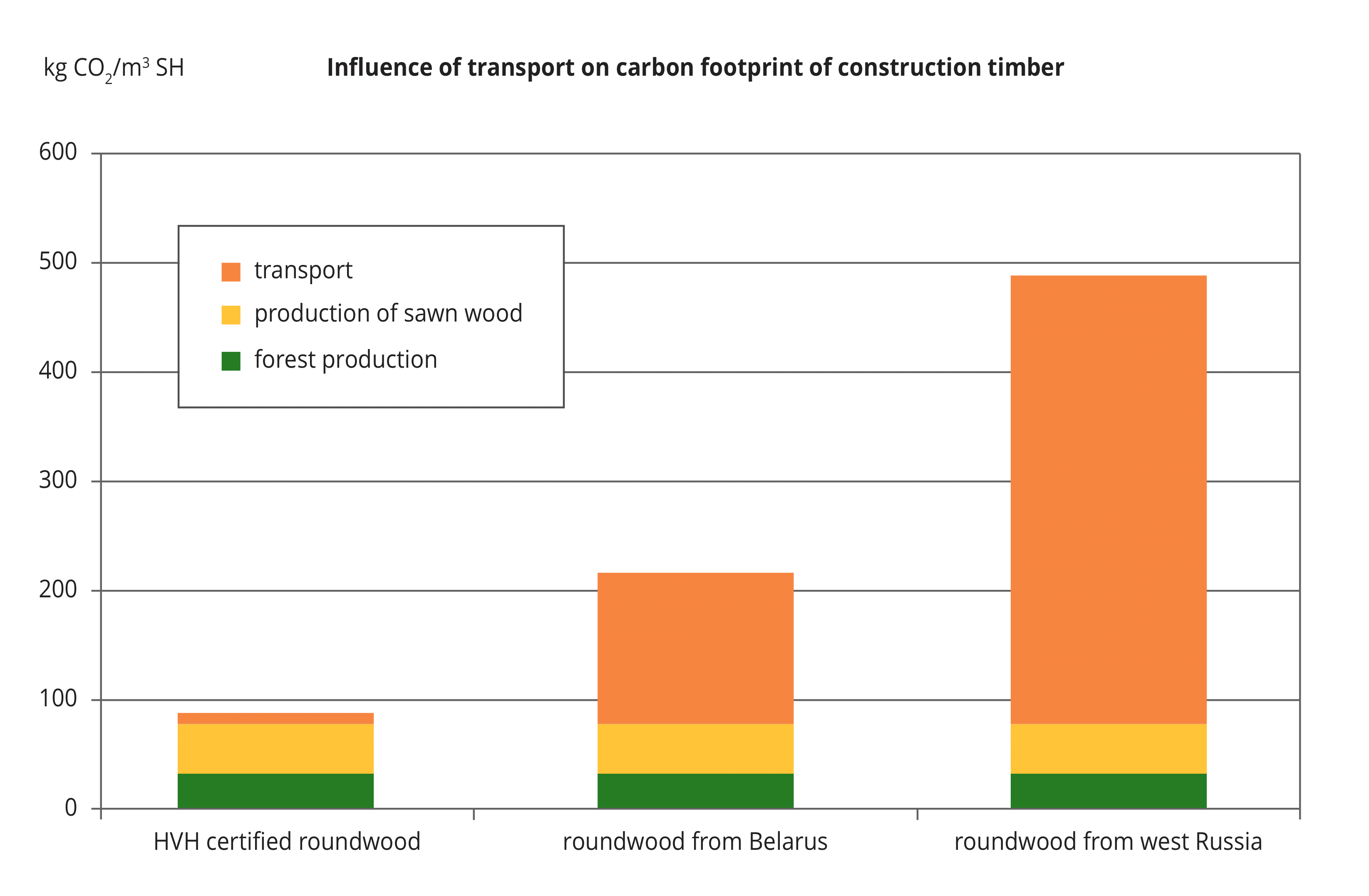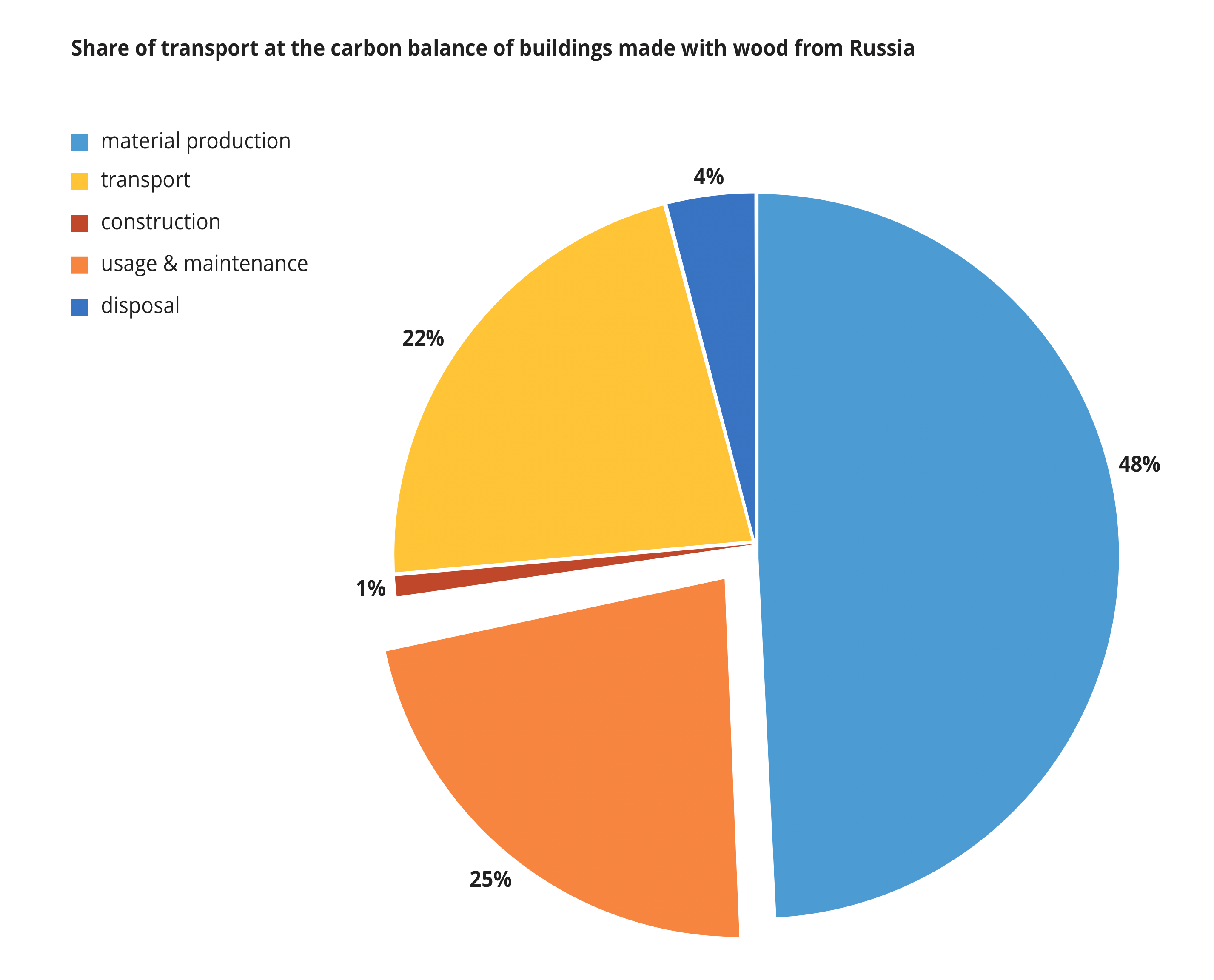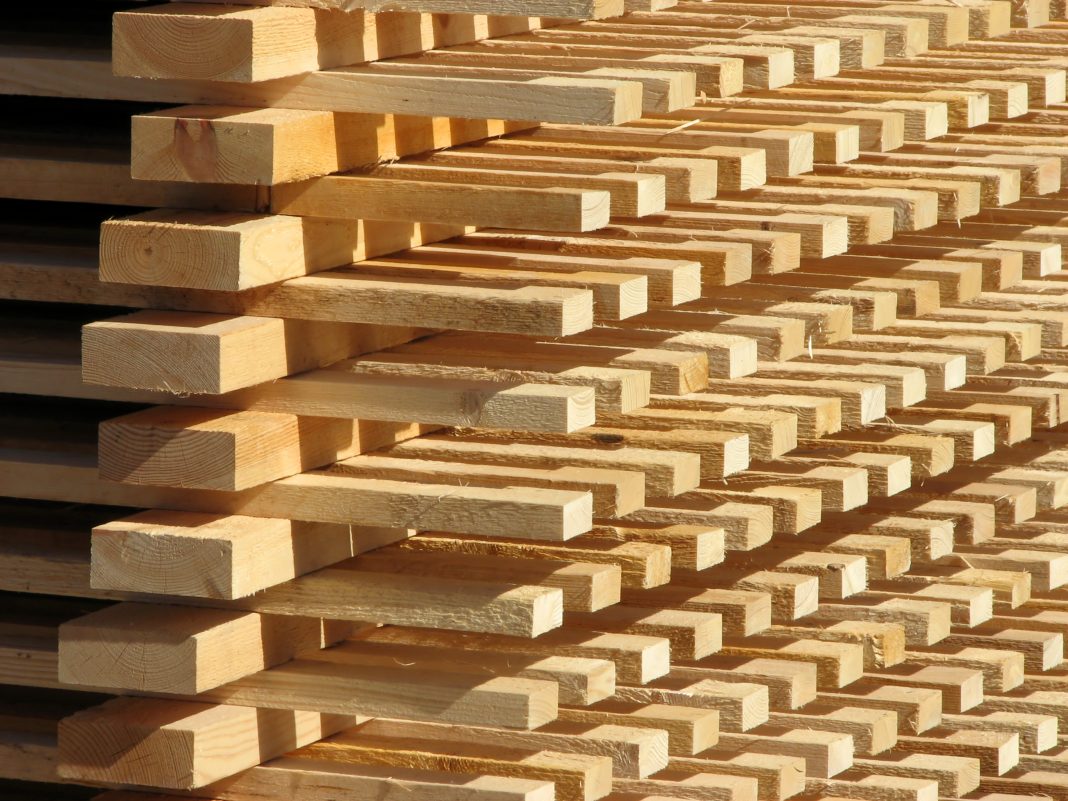We call on all interested parties from politics, administration, local authorities and business to use Low Carbon Timber®
The current reports of the IPCC on climate change are alarming and show that the development is not only far worse than feared but also that the efforts of the global community and the European Union must be drastically intensified to avert an existential threat to the environment, the economy, and the people. A considerable yet untapped reduction potential lies in a reduction of transport in the supply chains. With 22%, transport is the second highest cause of European greenhouse gas emissions, ahead of the “buildings” and “agriculture” sectors. Against this background, the avoidance of unnecessary transport is an essential instrument for reducing emissions in the transport sector. The transnational initiative and environmental label HOLZ VON HIER®, or LOW CARBON TIMBER® in non-German-speaking countries, represents a European best practice example that can be used directly by municipalities, companies, planners, and customers to make an immediate contribution to climate protection.
Shortening transports in supply chains as a strong lever for climate protection
Especially when using wood products, transport is the decisive factor influencing the carbon footprint of the products. For example, the transport of 1m3 of sawn wood (SH) from western Russia can cause emissions of 350 kg of CO2. The entire technical production process of glue-laminated wood, on the other hand, only emits an average of 70 kg of CO2.

Importance of climate-friendly supply chains for sustainable construction
The use of wood in durable products such as buildings is nowadays considered an important measure to counter climate change. The European Green Deal, in point 27, encourages the promotion of timber construction, and Communication 662/2020 specifies that wood captures CO2 during growth and thus represents carbon storage. This is correct in principle but only applies if the harvested wood originates from (in the long term!) sustainably managed forests and if it has travelled for a short distance as far as possible in the entire processing chain from the forest to the building site. Only then can wood enfold its high climate protection potential more than any other building material.
The more efficient the buildings are in the use phase, the more important the grey energy in the supply chains becomes. In the case of a modern wooden house, for example, the emissions from the transport of the wood alone (in the case of wood from Russia) can account for up to a quarter of all emissions over the entire life of the building, including the use, demolition, and disposal phases.
Reliable evidence of the transport routes of wood is essential
The problem is that wood does not tell how far it has been transported along the entire (!) supply chain. Therefore, information about the real transport routes is essential to make a sustainable purchase decision and to achieve a real climate protection effect. To obtain this information, classic life cycle assessments or environmental product declarations (EPD) are not suitable for various reasons (for more information, please contact us).

LOW CARBON TIMBER® – transport verification and European best practice example for climate-friendly supply chains
The eco-label HOLZ VON HIER® (HVH), resp. LOW CARBON TIMBER® (LCT) is a recognised, externally monitored certification system and an umbrella brand registered throughout Europe. LCT/HVH tracks the entire supply chain for products and building materials in real time, from the forest up to the final customer. A certificate, according to LCT/HVH thus provides exactly the information one needs to make a sustainable purchasing decision. LCT/HVH is an eco-label type I according to ISO 14024. LCT/HVH is suitable to be used as a means of proof within the framework of sustainable procurement. LCT/HVH is considered a best practice example for climate-friendly supply chains at the European level and is being implemented and disseminated in various European countries through the LIFE Climate Value Chains project.
For whom is LOW CARBON TIMBER® (LCT) relevant?
Policy level. LCT can be integrated into political programmes, as some countries are already practising. It’s a simple and cost-effective way to reduce CO2 emissions quickly, safely, and verifiably.
Public authorities and planners. With LCT, municipalities and planners for the first time have a simple and permissible possibility to reduce the carbon footprint of buildings promoting at the same time regional added value. LCT also bears the possibility of linking municipal buildings to the carbon market as a regional carbon sink project.
Enterprises. For companies, the documentation of climate-friendly supply chains via LCT/HVH offers many advantages, such as credibility for a growing target group, but also stability, risk minimisation and supply security in changing times.
We call on all interested parties from politics, administration, local authorities and business to use Low Carbon Timber® and to contact us for this purpose (service telephone: +49 (0)9209 – 918 97 51).

This work is licensed under Creative Commons Attribution-NonCommercial-NoDerivatives 4.0 International.


